In Italian, the Imperfetto is one of the past tenses that allows you to talk about actions or events that took place in the past. It is a versatile tense that is used in many different situations, and it is important to understand how to use it correctly if you want to communicate effectively in Italian.
The imperfetto is, together with the passato prossimo, one of the most used past tenses in Italian. In this post, you can learn more about how to use the Imperfetto to talk about the past to improve your Italian and avoid mistakes.
The imperfetto is very common and indispensable for everyday speech, narrating, and reading.
Do you know how to use adjectives with prepositions like interested in or similar to?
Look at these examples to see how imperfetto is used.
- I miei nonni abitavano a Firenze
- Quando ero giovane facevo molto sport.
- Mentre camminavo, parlavo al telefono.
- L’esame era veramente difficile.
- Mentre passeggiavo, ho incontrato Claudio.
Read the explanation to learn more.
The imperfetto allows you to talk about things that lasted in the past, it’s very useful when you want to talk about descriptions (of things, places or people) feelings, emotions, and habits.
You need the imperfetto to talk about actions that happened at the same time in the past.
You’ll find on this page some guidelines for choosing the imperfetto over other past tenses.
Where is the imperfetto in these sentences? SOME EXAMPLES:

Da bambina andavo in vacanza al mare (as a child I used to go to the sea)
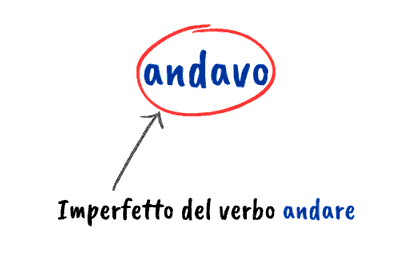

D’inverno faceva molto freddo (It was very cold in the winter)
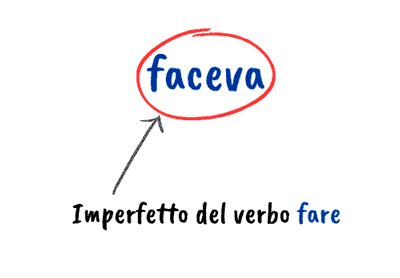
When do you need the imperfetto?
As mentioned before, the imperfetto is very useful when you want to talk about habitual actions in the past and describe something that happened.
We use the imperfetto also for actions that happened at the same time.
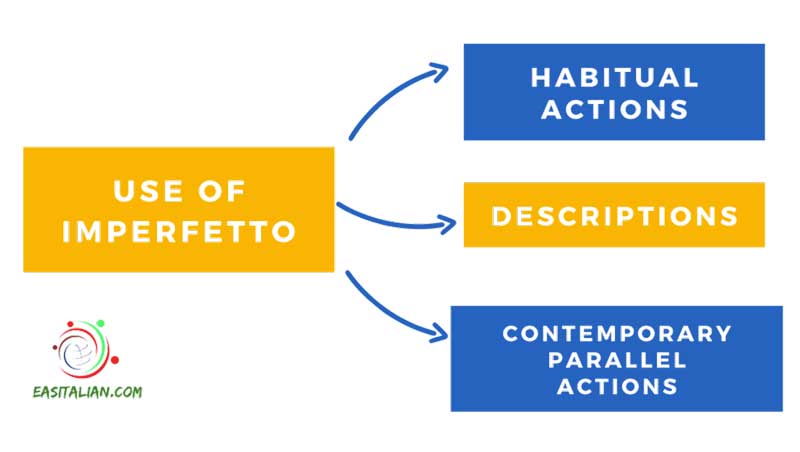
Habitual actions: what used to happen
A major area of use of the imperfect is to indicate a habitual past action, for example, what people used to do or what things used to be like.
These are fairly easy to identify, as they are often expressed by ‘used to’ or ‘would’ in English.
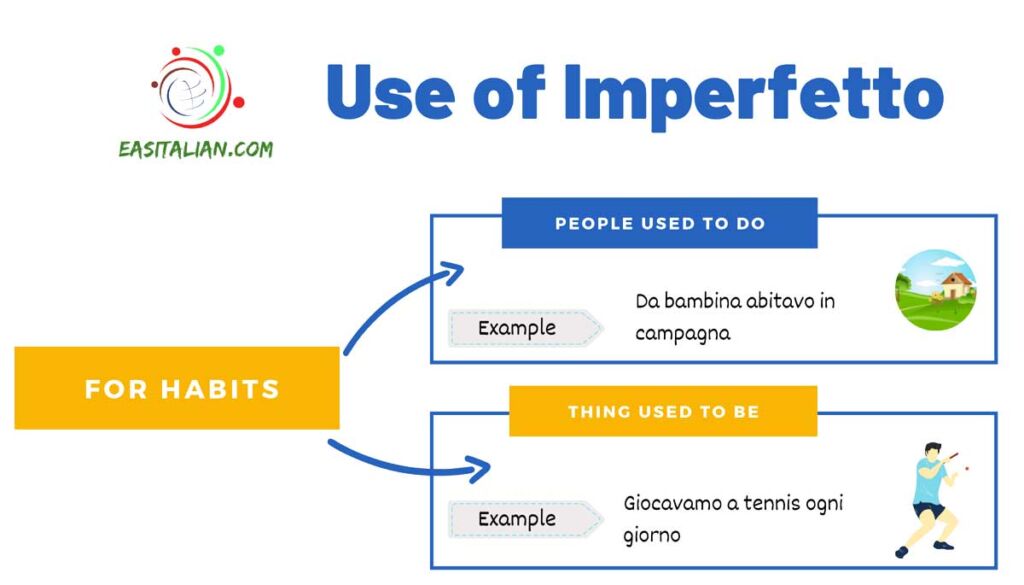
The imperfetto for habits is usually preceded or followed by expressions such as di solito, qualche volta, spesso, la domenica, il lunedì, di frequente, da bambino/a, ogni giorno, etc
Descriptions in the past
The imperfetto is a descriptive tense, you need it to talk about a description in the past.
That means the important thing is:
- not what happened but what was happening,
- not what the subject did but what she/he/it was doing.
In English, you can use continuous tense.
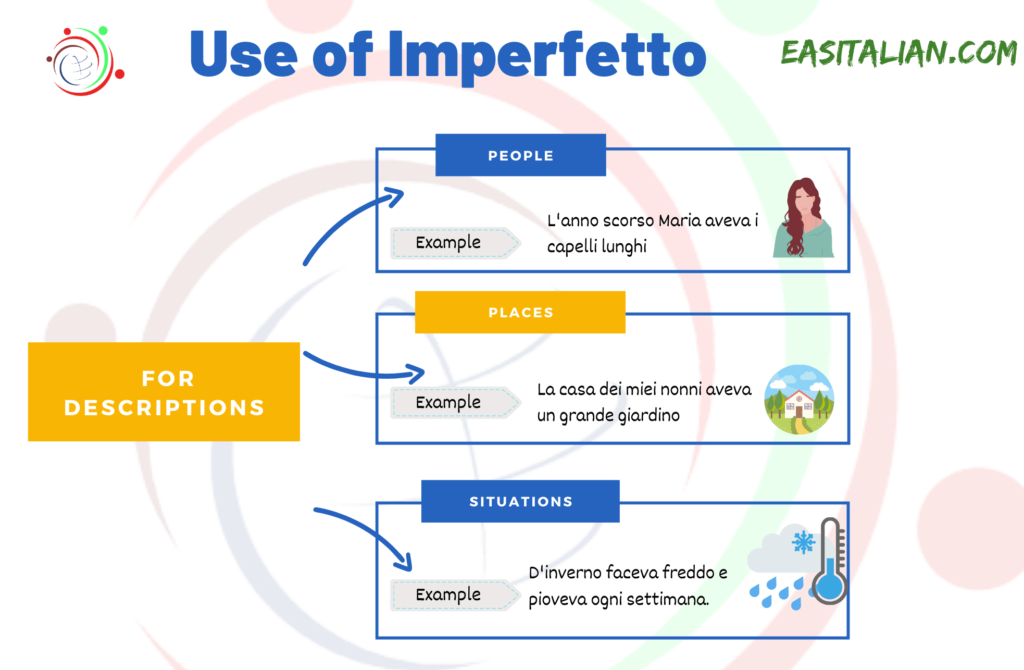
Contemporary actions
The imperfetto is needed when a sentence refers to two or more events that happened in the past.
– action happening at the same time in the past.
Example:
Mentre camminavo, leggevo il libro (As I was walking I was reading the book)
You need the imperfetto as the first verb (camminavo) and the second part of the sentence (leggevo).
The imperfetto is used to indicate two actions that took place at the same time in the past.
– in a background action interrupted by another action in the past happening at the same time.
Example:
Mentre camminavo, sono caduto (As I was walking, I fell)
You need the imperfetto as the first verb (camminavo) and in the second part of the sentence, you need the passato prossimo (sono caduto).
The verb in the imperfetto indicates an action in progress that meets with another action happening at a precise moment, expressed in the passato prossimo.
The imperfetto is the only tense you can use to talk about events that happened simultaneously.
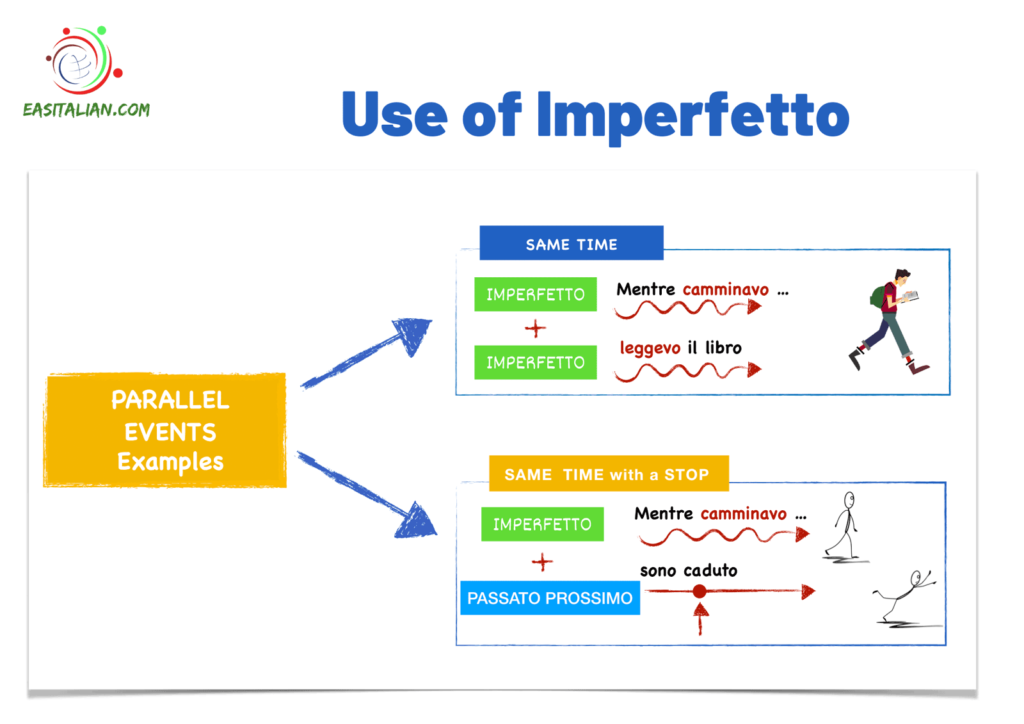
In this kind of sentence you may usually find the word “Mentre” (While/as/in the meantime).
The position of MENTRE is always BEFORE THE VERB in the imperfetto.
The position of the main action (in the passato prossimo) can change without modifying the meaning of the sentence.
Example:
- Mentre cucinavo è arrivato Fabio (While I was cooking Fabio came in)
- Fabio è arrivato mentre cucinavo (Fabio came in while I was cooking)
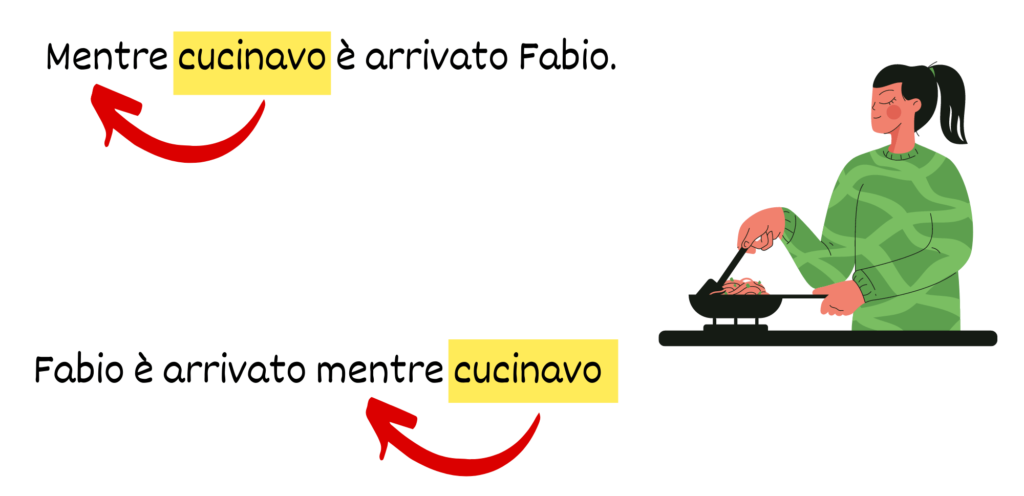
Formation of the IMPERFETTO
The imperfetto is a simple tense.
As usual, you’ll find regular and irregular verbs, but luckily the imperfetto doesn’t have many irregularities.
Even with the few verbs that are irregular in the imperfetto, what changes are the stem of the verb; the endings are always the same.
The imperfetto tense is formed by adding the endings to the stem of the -are, -ere, and -ire verbs.
 Regular –are Verbs (OF FIRST-CONJUGATION VERBS)
Regular –are Verbs (OF FIRST-CONJUGATION VERBS)
The imperfetto indicative of -are verbs is formed by dropping the infinitive -are ending and adding – ing the endings -avo, -avi, -ava, -avamo, -avate, and -avano to the verb root.
 Regular –ere Verbs (OF SECOND-CONJUGATION VERBS)
Regular –ere Verbs (OF SECOND-CONJUGATION VERBS)
The imperfetto indicative of -ere verbs is formed by dropping the -ere ending and adding the endings –evo, -evi, -eva, -evamo, -evate, and -evano to the verb root.
 Regular -ire Verbs (OF THIRD-CONJUGATION VERBS)
Regular -ire Verbs (OF THIRD-CONJUGATION VERBS)
The imperfetto indicative of -ire verbs is formed by dropping the -ire ending and adding the endings -ivo, -ivi, -iva, -ivamo, -ivate, and -ivano to the verb root.
ARE
LAVORARE
- Lavor – avo
- Lavor – avi
- Lavor – ava
- Lavor – avamo
- Lavor – avate
- Lavor – avano
ERE
PRENDERE
- Prend – evo
- Prend – evi
- Prend – eva
- Prend – evamo
- Prend – evate
- Prend – evano
IRE
CAPIRE
- Cap – ivo
- Cap – ivi
- Cap – iva
- Cap – ivamo
- Cap – ivate
- Cap – ivano
Irregular Verbs
The verbs fare, dire, bere, produrre, porre, and essere take their root for the imperfetto tense from the original Latin infinitives, but the conjugations are regular.
For these verbs add the imperfetto endings to fac- (for fare), dic- (for dire), bev- (for bere), produc- (for produrre), pon- (for porre), er- (for essere).
ARE – FARE
- Fac – evo
- Fac – evi
- Fac – eva
- Fac – evamo
- Fac – evate
- Fac – evano
ERE – BERE
- Bev – evo
- Bev – evi
- Bev – eva
- Bev – evamo
- Bev – evate
- Bev – evano
IRE – DIRE
- Dic – evo
- Dic – evi
- Dic – eva
- Dic – evamo
- Dic – evate
- Dic – evano
IMPERFETTO OF REFLEXIVE VERBS
If the verb is reflexive, the reflexive infinitive ending drops similarly.
Example:
lavarsi (to wash oneself)
RIFLESSIVO – LAVARSI
io mi lav – avo
tu ti lav – avi
lui/lei si lav – ava
noi ci lav – avamo
voi vi lav – avate
loro si lav – avano
Pronunciation Tip
Practice the pronunciation of the imperfetto.
There are one-syllable, two-syllable, three-syllable, and four-syllable verbs. Be sure to pronounce the imperfetto tense in this way: io parlavo, tu parlavi, lui/lei parlava, noi parlavamo, voi parlavate, loro parlavano.
AUDIO – verbo parlare all’imperfetto
Imperfetto vs Passato Prossimo
Compare the difference in meaning in the following sentences where the passato prossimo and the imperfetto are used.
✎ Giulia è partita ieri. (Giulia left yesterday.)
✎ Di solito Giulia partiva alle cinque. (Giulia used to leave at five.)
PASSATO PROSSIMO
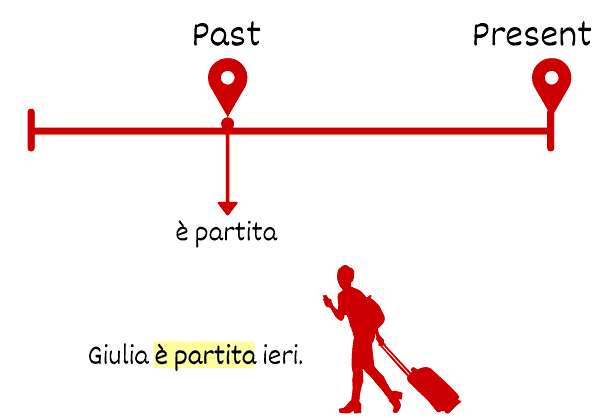
IMPERFETTO
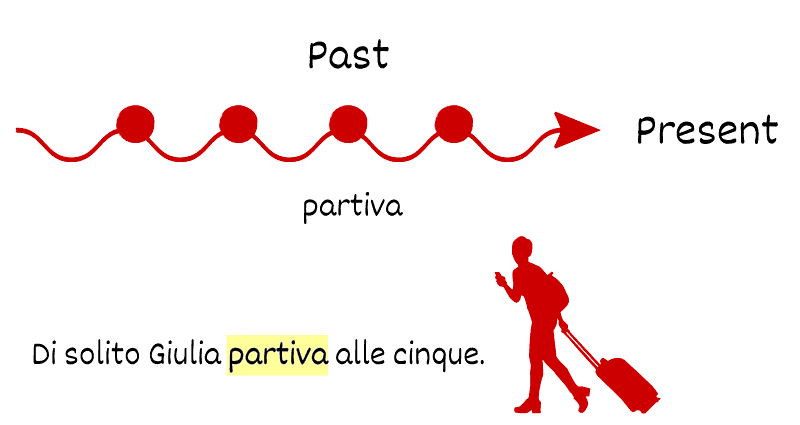
Passato prossimo
Sono andata al supermercato.
(I went to the supermarket.)
Imperfetto
Andavo al supermercato tutti i giorni.
(I went to the supermarket every day.)
The Imperfetto is a crucial past tense in Italian that is used to describe ongoing or habitual actions, express emotions or feelings, describe the background or setting of a past event, express hypothetical situations, make polite requests or suggestions, and tell stories in the past. By mastering the Imperfetto, you will be able to communicate effectively and fluently in Italian.

What’s next?
You might want to keep learning Italian online with these free resources:


Let’s Connect!
Join and visit our Facebook Group for Italian Learners

 VIDEO
VIDEO






Leave a Reply